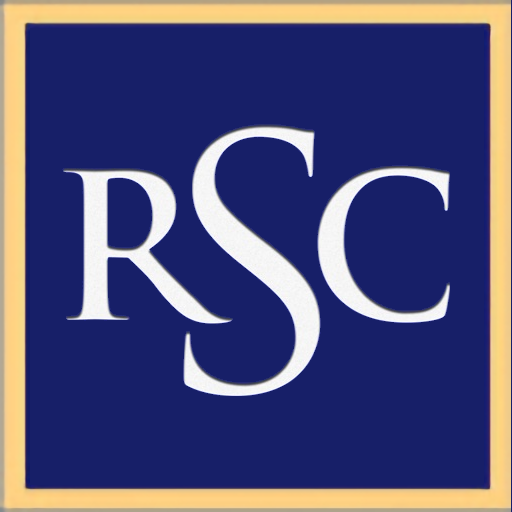
Books by Title
See the icons used for the links to the available media types for an article
Search the RSC Bibliography
Advanced Search of the RSC Bibliography
This form allows you to perform an advanced search. You only need to fill in one field below. This can be any field. If you select "not" as your match criteria, you must select at least one other field.
Under the guidance of some of the best thinkers on the Book of Mormon, the Abinadi narrative springs to life as each chapter approaches Abinadi’s story and words from a different perspective. Whether viewed through a sociopolitical, literary, theological, philosophical, or historical lens, new insights and a new appreciation for the richness of Abinadi’s discourse will help readers reignite their passion for the beauty and depth of the Book of Mormon. This volume is written for an informed, Latter-day Saint audience and seeks to make a contribution with other high-quality research and writing being done on the Book of Mormon. It is produced by members of Brigham Young University’s Book of Mormon Academy, a group of scholars dedicated to research on the Book of Mormon. Each of the members brings a different area of expertise to bear on the Abinadi narrative. As that narrative is viewed from a variety of angles, its richness, beauty, and profound meaning come more clearly into focus. ISBN 978-1-9443-9426-4
Articles
RSC Topics > G — K > Justice
RSC Topics > L — P > Law of Moses
RSC Topics > Q — S > Repentance
RSC Topics > Q — S > Salvation
RSC Topics > L — P > Law of Moses
RSC Topics > Q — S > Salvation
RSC Topics > A — C > Church Organization
RSC Topics > L — P > Prophets
RSC Topics > Q — S > Resurrection
RSC Topics > Q — S > Salvation
RSC Topics > A — C > Book of Mormon
Old Testament Scriptures > Isaiah
RSC Topics > G — K > Heaven
RSC Topics > Q — S > Sabbath
RSC Topics > Q — S > Sin
RSC Topics > A — C > Baptism
RSC Topics > A — C > Book of Mormon
RSC Topics > D — F > Doctrine
RSC Topics > G — K > Grace
RSC Topics > Q — S > Salvation
RSC Topics > Q — S > Sin
This is the fascinating and inspiring story of Johann Huber, one of Austria’s earliest LDS converts. Huber was a controversial political figure in Haag but soon went from the frying pan into the fire when he informed his neighbors of his LDS baptism in Munich in 1900. For the next decade, he weathered relentless persecution from friends, neighbors, Catholic clerics, the local public school, and government officials. Despite attacks from determined opponents, Huber was extraordinarily loyal to his adoptive faith and played a lead role in laying the foundation of the Church in Austria and its ongoing legacy. ISBN 978-0-8425-2933-4
Chapters
RSC Topics > L — P > Missionary Work
RSC Topics > A — C > Church History 1878–1945
RSC Topics > L — P > Missionary Work
RSC Topics > A — C > Conversion
RSC Topics > L — P > Missionary Work
RSC Topics > L — P > Missionary Work
Two nineteenth-century men, Alexander Campbell and Joseph Smith, each launched restoration movements in the United States. They vied for seekers and dissatisfied mainstream Christians, which led to conflict in northeastern Ohio. Both were searching for the primordial beginning of Christianity: Campbell looking back to the Christian church described in the New Testament epistles, and Smith looking even further back to the time of Adam and Eve as the first Christians. Campbell took a rational approach to reading the Bible, emphasizing the New Testament, and began by advocating reform among the Baptists. Smith took a revelatory approach to reading the Bible, both Old and New Testaments, and adding new scriptures. This book is a comparison of these two nineteenth-century men and the restoration movements they created with an in-depth examination of what restoration meant to both groups, as well as their beliefs, their interactions with each other, their similarities, their differences, and their unique contributions to Christianity. This book is copublished by BYU Press and Abilene Christian University Press. ISBN 978-1-9443-9428-8
This volume explores the possibility that mortality is framed and informed by God’s love in more ways than we normally suppose. We live within the cosmic embrace of God’s love, even when we encounter difficulties. Hence, as the medieval Catholic thinker Catherine of Siena suggested, “All the way to heaven is heaven” because gospel obedience brings joy and, in a perfectly natural way, fits us for the celestial kingdom. In the process we are stretched out along the long arc of God’s love. Our hearts turn to others, and not just to those about us but also to our ancestors and generations yet unborn. As we discover the depths of Christ’s Atonement, our everyday thinking and conduct begin to hum the miracles of God’s love, chief of which is that there is no bottom to that love. ISBN 978-1-9503-0409-7
The Lord has told us that many things in the Apocrypha are true and many false. The fascination that apocryphal writings generally hold for Latter-day Saints was recognized in a 1983 BYU symposium on this topic addressed by fifteen scholars representing a wide range of expertise. Those addresses are collected in this book.
Book of Moses Topics > Basic Resources > Surveys and Perspectives on Ancient Sources from Outside the Bible
Articles
RSC Topics > A — C > Bible
RSC Topics > A — C > Bible
RSC Topics > L — P > Plan of Salvation
Today, it’s hard to imagine Apostles not being able to visit any part of the world. But the Saints in South America waited twenty years between visits. Follow the experiences in 1948 of Apostle Stephen L Richards and his wife Irene in Argentina, Brazil, and Uruguay that changed the course of the Church in Latin America. In addition, the book has a prologue and epilogue that tell the history of the Church in Latin America before and after the Richardses’ visit. ISBN 978-1-9443-9477-6
Chapters
RSC Topics > D — F > First Presidency
RSC Topics > L — P > Prayer
RSC Topics > T — Z > Temples
RSC Topics > A — C > Church History 1878–1945
RSC Topics > A — C > Church History 1946–Present
The 2013 BYU Church History Symposium This volume is a collection of essays by prominent LDS scholars–including keynote speakers Richard Bushman and David Holland–that discuss the interest in the ancient world shared by Joseph Smith and the early Latter-day Saints. Topics include Joseph Smith’s fascination with the ancient Americas, his interaction with the Bible, his study of Hebrew and Greek, his reading of Jewish and Christian apocryphal writings, and his work with the Book of Abraham in the context of nineteenth-century Egyptology. Together, these essays demonstrate that Joseph Smith’s interests in antiquity played an important role in his prophetic development as he sought to recover ancient scripture, restore the ancient Church, and bring the Latter-day Saints into fellowship with the sacred past. ISBN 978‐0‐8425‐2966‐2
Book of Mormon Scriptures > Ether
Book of Moses Topics > Joseph Smith Translation (JST) > Historicity and Ancient Threads — General Issues
Articles
Several approaches to interpreting Joseph Smith’s use of the so-called Jewish and Christian apocryphal literature have been employed both by critics of The Church of Jesus Christ of Latter-day Saints (hereafter LDS), and by those professing faith in the Church and whose interests may be classified as apologetic. These approaches span the range of being probative of Joseph Smith’s restoration of lost texts and scripture and being dismissive of Mormonism generally, because its sacred religious texts are founded on flagrant plagiarism of apocryphal literature.[1] Before one can answer the most important historical question at hand, how Joseph Smith used the Apocrypha and what relationship that body of literature had to early Mormon writings, it seems prudent to first of all establish some controls on the discussion. This is necessary because previous discussions have largely contented themselves with drawing out parallels between apocryphal writings and early Mormon publications without any discussion of whether or not Joseph Smith had access to the texts under discussion. Moreover, a wide variety of modern translations of ancient apocryphal texts are often employed when there is no possible way that someone living in the early nineteenth century could have known them. This is particularly important when citing phrases or words that Joseph Smith might have incorporated into the language of his revelations.
Book of Moses Topics > Basic Resources > Surveys and Perspectives on Ancient Sources from Outside the Bible
RSC Topics > A — C > Bible
Book of Mormon Scriptures > Ether
RSC Topics > G — K > Grace
RSC Topics > L — P > Learning
RSC Topics > A — C > Book of Abraham
RSC Topics > A — C > Creation
RSC Topics > A — C > Baptism for the Dead
This volume aims to assist in the personal and family study of the history and teachings of the Old Testament. The book gathers some of the clearest writings on the Old Testament that have been published by the Religious Studies Center at Brigham Young University. The Old Testament is not only foundational to our understanding of the birth, life, atonement, crucifixion, and resurrection of the Savior, as found in the New Testament, the Book of Mormon, and other scripture, but it also teaches us about God, our faith history, and the spiritual heritage of the house of Israel. ISBN 978-1-9503-0420-2
Articles
The 42nd Annual Brigham Young University Sidney B. Sperry Symposium The Psalmist asks, “Who shall ascend into the hill of the Lord?” This year’s Sperry Symposium discusses ascending into the Lord’s mountain within the context of theophany, ancient temple worship, sacred space, sacrifice, offerings, and hymns and songs in the text of the Old Testament and the Book of Mormon. The scriptures contain a rich treasury of information of how ancient Israelites and the people in the Book of Mormon worshipped God and expressed themselves through ritual and devotions as found in the Psalms. These explorations of ancient temple worship help us to better understand and appreciate latter-day temple and worship traditions. ISBN 978-1-60907-581-1
Articles
RSC Topics > D — F > Easter
RSC Topics > L — P > Old Testament
RSC Topics > T — Z > Temples
RSC Topics > T — Z > Worship
RSC Topics > A — C > Creation
One thing that has always perplexed readers of Genesis is the location of the two special trees within the Garden of Eden. Although scripture initially applies the phrase “in the midst” only to the tree of life (Genesis 2:9), the tree of knowledge is later said by Eve to be located there too (see Genesis 3:3). In the context of these verses, the Hebrew phrase corresponding to “in the midst” literally means “in the center.” How can both trees be in the center?
Book of Moses Topics > Chapters of the Book of Moses > Moses 4–6:12 — Grand Council in Heaven, Adam and Eve
Book of Moses Topics > Temple Themes in the Book of Moses and Related Scripture
RSC Topics > D — F > Devil
RSC Topics > L — P > Old Testament
RSC Topics > T — Z > Temples
RSC Topics > G — K > Judgment
RSC Topics > T — Z > Urim and Thummim
RSC Topics > L — P > Prayer
RSC Topics > T — Z > Worship
RSC Topics > L — P > Old Testament
RSC Topics > Q — S > Service
RSC Topics > T — Z > Worship
RSC Topics > L — P > Old Testament
RSC Topics > T — Z > Worship
RSC Topics > T — Z > Worship
RSC Topics > L — P > Old Testament
RSC Topics > L — P > Ordinances
RSC Topics > Q — S > Sacrifice
RSC Topics > T — Z > Worship
RSC Topics > T — Z > Temples
RSC Topics > L — P > Old Testament
RSC Topics > Q — S > Salvation
RSC Topics > T — Z > Worship
RSC Topics > L — P > Ordinances
RSC Topics > Q — S > Sacrament
RSC Topics > Q — S > Sacrifice
RSC Topics > T — Z > Unity
RSC Topics > T — Z > Worship
RSC Topics > D — F > First Vision
RSC Topics > G — K > Joseph Smith
RSC Topics > G — K > Judgment
RSC Topics > T — Z > Zion
RSC Topics > T — Z > Zion
RSC Topics > L — P > Ordinances
RSC Topics > Q — S > Sacrifice
RSC Topics > T — Z > Temples


